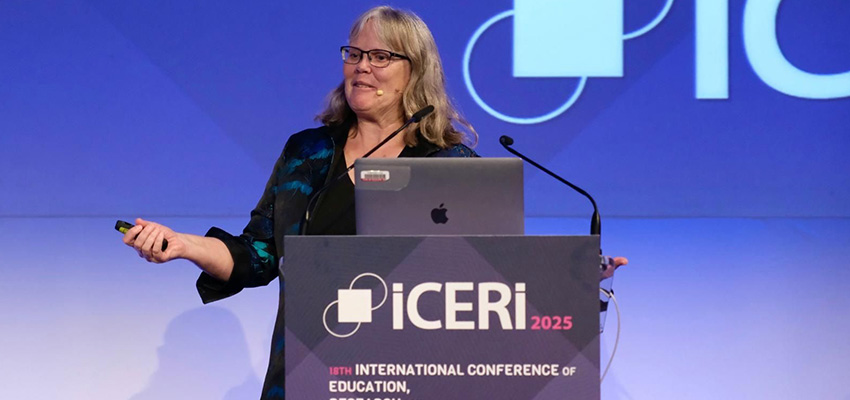
Is human-centered design becoming less human?
On Monday, November 10, MIT D-Lab Founding Director Amy Smith delivered a keynote, Is human-centered design becoming less human? at the 18th annual International Conference of Education, Research and Innovation (iCERi) conference in Seville, Spain.
Human-centered design (HCD), the practice of putting the user’s experience at the center of the design process, was popularized in the 1990s and moved into the mainstream in the following decades. It is generally considered the gold standard for user participation in design. Still, a deeper look at participation raises some questions about ways to enrich user engagement that take greater advantage of their knowledge and creativity and give them a greater role in decision-making and direction-setting.
While a wide variety of tools and techniques have been developed to gather user input and inform the HCD process, the degree of participation from these users can vary significantly, ranging from simple feedback sessions to interactive focus groups to activities that involve users in different stages of the design process. Recent advances in artificial intelligence (AI) are working on creating large language model (LLM) simulations to create personas for human subject research and applying them in human-centered design. While this may facilitate the focus on the user experience in the design of the product, is it at the expense of user engagement in the process?
In her talk, Amy presented a framework for thinking about participation in the context of design, looking at HCD and other user-focused design paradigms. She highlighted the tangible and intangible benefits of engaging users in the design process, drawing on research and experiences from MIT D-Lab. Finally, she engaged the audience in small group discussions around the role of AI in design to lay the groundwork for further conversations throughout the conference.
The Participation Compass: A tool for navigating through the participation landscape
In addition to her conference keynote, Amy and MIT D-Lab colleague Martha Thompson offered a workshop titled, The Participation Compass: A tool for navigating through the participation landscape.
Workshop description: Whether for engaging students in field-based projects or developing new products, the participation of the end-user is an important component for effective design and innovation. When done well, participation can lead to numerous benefits, improving both the final product and enhancing the design process of design itself by giving agency to the users involved in the process, however, effective participation requires enabling conditions that are often difficult to achieve in complex contexts. Students and practitioners engaging in fieldwork need to consider many factors when selecting the appropriate approach to participation for their projects. This frequently requires them to make difficult tradeoffs between the desired benefits from participation and the feasibility of implementing it effectively. Different approaches to participation (consultation vs. partnership vs. leadership) yield different benefits and require different levels of investment and enabling conditions. The Participation Compass guides students and practitioners through the process of identifying the appropriate type of participation for their project based on the benefits they want to achieve and the constraints they have to work within. This workshop takes participants through the use of the Participation Compass and the underlying participation framework that supports it.
Contact
Nancy Adams, MIT D-Lab Communications Officer

